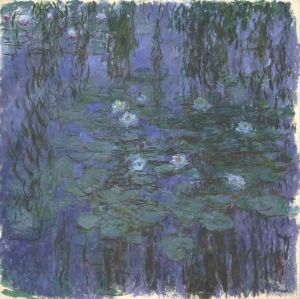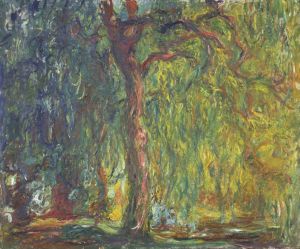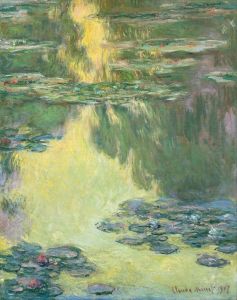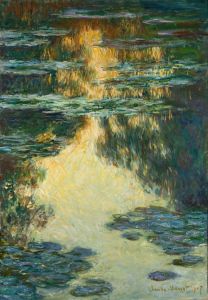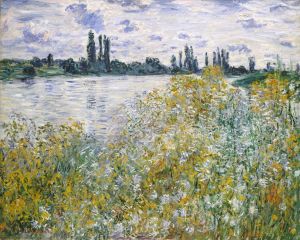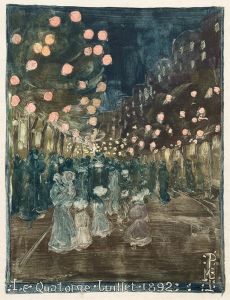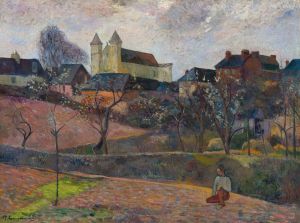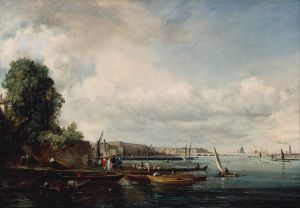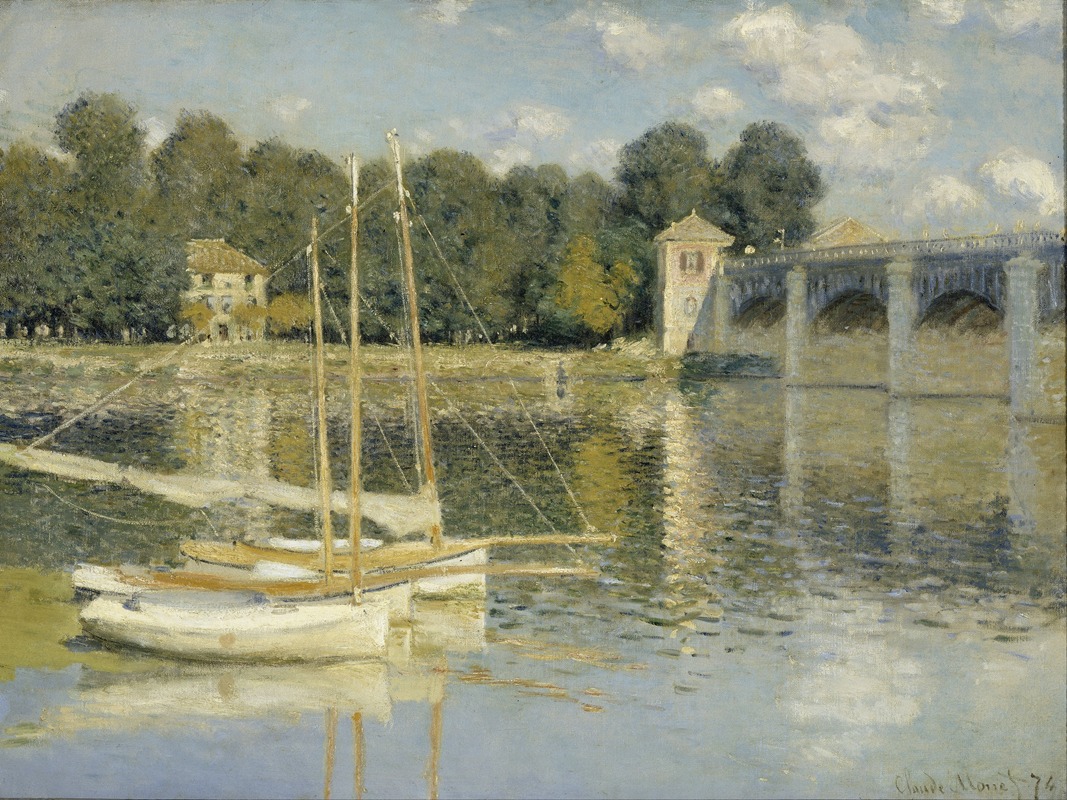
The Argenteuil Bridge
A hand-painted replica of Claude Monet’s masterpiece The Argenteuil Bridge, meticulously crafted by professional artists to capture the true essence of the original. Each piece is created with museum-quality canvas and rare mineral pigments, carefully painted by experienced artists with delicate brushstrokes and rich, layered colors to perfectly recreate the texture of the original artwork. Unlike machine-printed reproductions, this hand-painted version brings the painting to life, infused with the artist’s emotions and skill in every stroke. Whether for personal collection or home decoration, it instantly elevates the artistic atmosphere of any space.
"The Argenteuil Bridge" is a painting by the renowned French Impressionist artist Claude Monet. Created in 1874, this artwork is one of several that Monet painted of the bridge in Argenteuil, a small town located on the banks of the Seine River, just northwest of Paris. Argenteuil was a popular location for many Impressionist painters during the late 19th century, providing a picturesque setting that captured the essence of modern life and natural beauty.
Claude Monet moved to Argenteuil in December 1871 and lived there until 1878. During his time in Argenteuil, he produced numerous paintings that depicted the town, its surroundings, and the Seine River. "The Argenteuil Bridge" is part of this body of work and exemplifies Monet's fascination with light, water, and the changing effects of the atmosphere.
The painting measures approximately 60 cm by 80 cm and is executed in oil on canvas. It portrays the Argenteuil Bridge spanning the Seine River, with boats and reflections in the water below. The bridge itself is depicted with a sense of solidity and structure, while the water and sky are rendered with fluid brushstrokes that capture the transient effects of light and color. The use of vibrant, yet harmonious colors is characteristic of Monet's Impressionist style, which sought to convey the sensory experience of a scene rather than its precise details.
Monet's technique in "The Argenteuil Bridge" involves the application of short, broken brushstrokes that blend optically rather than physically. This method allows the viewer's eye to mix the colors, creating a shimmering effect that mimics the play of light on water. The painting also demonstrates Monet's interest in capturing the momentary and ephemeral qualities of the natural world, a hallmark of the Impressionist movement.
The Argenteuil Bridge itself was an important symbol of modernity and progress during Monet's time. Built in the mid-19th century, it facilitated transportation and commerce, linking the town of Argenteuil with the surrounding areas. Monet's depiction of the bridge reflects the intersection of nature and human activity, a theme that recurs throughout his work.
"The Argenteuil Bridge" is housed in the Musée d'Orsay in Paris, which holds an extensive collection of Impressionist and Post-Impressionist masterpieces. The painting is celebrated for its innovative approach to capturing light and atmosphere, as well as its contribution to the development of the Impressionist movement.
Monet's work in Argenteuil, including "The Argenteuil Bridge," played a crucial role in establishing his reputation as a leading figure in the Impressionist movement. His ability to convey the fleeting effects of light and color influenced many of his contemporaries and successors, solidifying his legacy as one of the most important artists of the 19th century.
In summary, "The Argenteuil Bridge" by Claude Monet is a quintessential example of Impressionist art, showcasing the artist's mastery of light, color, and atmosphere. It remains a significant work within Monet's oeuvre and continues to be admired for its beauty and innovation.






